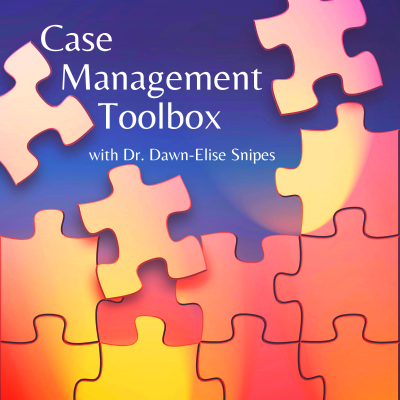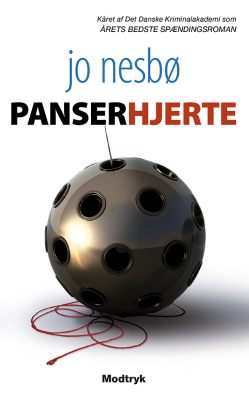
Case Management Toolbox
Podcast af Dr. Dawn-Elise Snipes
Begrænset tilbud
1 måned kun 9 kr.
Derefter 99 kr. / månedIngen binding.

Bedømt til 4,7 stjerner i App Store
Læs mere Case Management Toolbox
Case Management Toolbox Podcast will provide case managers with tools and continuing education training related to evidence based practices for behavioral health and medical case management services.
Alle episoder
10 episoderAssisting Families Through Life Transitions CEUs are available for this presentation at AllCEUs https://www.allceus.com/member/cart/index/product/id/81/c/ Dr. Dawn-Elise Snipes PhD, LMHC Executive Director, AllCEUs.com Podcast Host: Counselor Toolbox and Case Management Toolbox Flower Empower • A comprehensive approach • The core of the flower is the clinician-family partnership • Assess need • Sustain a caring environment • Educate • Identify and link to resources • The stem symbolizes advocacy activities • The leaves symbolize vision, values and principles • The roots feed the flower (partnership): • Responsibility and accountability • Recognition of the value of the partnership • Respect uniqueness • Resource identification for emerging needs • Results monitoring Clinician - Family Partnership • Recognize family assessment of the situation as essential • Respect the important role of family • Determine the desired degree of family involvement • Negotiate the roles of clinician and family within the partnership • Listen • Engage in participatory dialog • Recognize patterns • Highlight family strengths Assessment • Within the context of the family • Identify if assistance is required to strengthen the family • Information • Family structure and composition • Culture • Power and Role Structures • Communication • Access to Resources • Environmental characteristics • Family strengths • Family supports • Family perception of events • Degree of involvement desired by family Sample Questions • Who would you like us to share information with and who not? • How can we be most helpful to you and your family or friends during this transition? (Clarifies expectations, increased collaboration) • What has been most/least helpful to you in past times of crisis? (Identifies past strengths, problems to avoid and successes to repeat) • What is the greatest challenge facing your family right now? (Indicates actual/potential suffering, roles, and beliefs) • What do you need to best prepare you/your family member for dealing with this issue?(Assists with early discharge planning) • Who do you believe is suffering the most in your family at this time? (Identifies which family member requires the greatest support and intervention) • What is the one question you would most like to have answered right now? (Explores the most pressing issue or concern) • How have I been most helpful to you? How could I improve? (Demonstrates a willingness to learn and work collaboratively) Support • Sources of Resources and Support • Intrafamilial (within) • Extrafamilial (outside) such as community services, training programs • Interfamilial (between) like support groups Values and Principles • Recognize personal assumptions and values about families and cultural beliefs and to adjust their care accordingly. • Families are unique, diverse, and change over time • Families in transition can make informed decisions • Families have expert knowledge and skills that help them determine their own needs and respond to expected and unexpected life events. • Partnerships with families are built upon mutual trust, honesty, and collaboration • Partnerships support and strengthen families • Families should be supported in their choices • Family members and the client may have different and conflicting needs Outreach • Target groups • Clinicians • Families • Policymakers • The public • Provide pre-emptive information to assist families in managing expected or unexpected life events Workplace environment • Ensure staff is oriented to family-centered care • Ensure clinicians can effectively access resources • Provide ongoing opportunities for professional development Implementation • Ensure appropriate staffing levels and placement • Implement family-centered practices and policies • Create work environment conducive to promoting family involvement • Develop employee assistance programs promoting family health • Ensure policies promote work-life balance Advocacy • Lobbying • Family care giving • Public education about the legitimacy of family caregivers • Consistency in funding for respite care and research • Mechanisms within organizations for family Question to Ponder • Think of your collective experience from supporting families during life transitions. • If you could change one aspect of the care and support they received, what would it be? • What would you make different for them? Implementation • Assessment of organizational readiness • Involvement of direct and indirect members • Dedication • Ongoing opportunities for collaboration • Opportunities for personal reflection Summary • The Flower Empower model provides a simple but comprehensive framework for developing a working partnership.
448 - Post Stroke Psychosocial Issues Dr. Dawn-Elise Snipes PhD, LPC-MHSP, LMHC Executive Director: AllCEUs Podcast Host: Counselor Toolbox, Case Management Toolbox, NCMHCE Exam Review Objectives • Examine the prevalence of and risk factors for stroke • Identify Post-Stroke Psychosocial Issues Intro • Many of our clients are at high risk of stroke • People with anxiety disorders have a 33% higher risk of stroke partly due to HBP and lifestyle factors such as smoking • Mood stabilizers were collectively associated with a significantly increased risk for stroke in participants with bipolar disorder • Benzodiazepine use is associated with a 20% higher risk of stroke • Almost 40% received 1 or a combination of drugs hypothesized to impair recovery during the first 30 days after stroke.(e.g. clonidine which reduces NE levels, atypical antipsychotics, benzodiazepines) Risk for Stroke • Smokers are 2-4x as likely to have a stroke • Make blood sticky and more likely to clot, which can block blood flow to the heart and brain • Damage cells that line the blood vessels • Increase the buildup of plaque (fat, cholesterol, calcium, and other substances) in blood vessels • Cause thickening and narrowing of blood vessels • Alcohol increases stroke risk by 38% • Causing A-Fib • Development of atherosclerosis, or the hardening and narrowing of arteries • Liver damage impairing blood clotting • HBP during detoxification Risk for Stroke • Stimulant abuse increasing blood pressure • High blood pressure • Sleep apnea • Non-sleep-apnea sleep disorders • Age • Diabetes doubles the risk of stroke • Use of nonsteroidal anti-inflammatory drugs (NSAIDs), but not aspirin, may increase the risk of heart attack or stroke, particularly in patients who have had a heart attack Mini-Strokes • The signs and symptoms of a TIA resemble those found early in a stroke and may include sudden onset of: • Weakness, numbness or paralysis in your face, arm or leg, typically on one side of your body • Slurred or garbled speech or difficulty understanding others • Blindness in one or both eyes or double vision • Dizziness or loss of balance or coordination • Sudden, severe headache with no known cause • 70% reported that their TIA had long-term effects including memory loss, poor mobility, problems with speech and difficulty in understanding. 60% of people stated that their TIA had affected them emotionally Assessments • When • Just before discharge • One month after stroke • Three months after stroke • Six months after discharge • What to look for • Cognitive functioning • Depression • Anxiety • Social withdrawal • Changes in physical presentation Impacts of Stroke • General Physical Issues • Reduced mobility / independence • Vision problems • Difficulty with ADLs • Difficulty swallowing • Sleep problems (36%) • Chronic headaches • Pneumonia • Pain Impacts of Stroke • Difficulty understanding or expressing emotions • Post-stroke depression (PSD) (67%) • Post-stroke depression may remit as the person regains function • Correlated with hospitalization, functional loss and particular areas of the brain being damaged • Post-stroke anxiety (25%) • Post-stroke emotional incontinence (PSEI) uncontrollable outbursts of involuntary laughing or crying for no apparent reason (34%) • Functional status, serotonin polymorphisms, and low social support were related to PSEI at three months post-stroke • SSRIs are often effective Impact • Post-stroke anger proneness (PSAP) • serotonergic dysfunction seems to play a role in the development of PSAP • Post-stroke fatigue (PSF) (50%-86%) • Depression • Neurological deficits • Antidepressants • Sleep disturbances • Post-stroke pain • Changes to thinking, memory and perception after stroke can impact how the person sees, hears and feels the world. This can affect how they feel about themselves and others Impact • Cognitive skills can be affected by emotional state or tiredness, but brain damage caused by stroke can also cause difficulties with • Ability to learn new skills • Ability to plan • Ability to problem solve • Attention – being able to concentrate and focus • Orientation – knowing the day and time • Short-term memory – knowing what happened recently • Changes in working memory • Intellectual fulfillment Attention and Memory Intervention • Minimum of 1 hour a day of actively listening to music showed recovery in both verbal memory and focused attention, as early as 3 months after a stroke Impact • Personality changes • Repetitive behavior • Disinhibition – tendency to say and do things that are socially inappropriate • Impulsivity including sudden and socially inappropriate actions. Impact • Perception is the term that describes how you see, hear and feel the world. After a stroke, your perception can include changes to: • Feeling contact, pain, heat or cold on the side of your body affected by stroke • Judging distance • Performing certain movements even without physical disability (apraxia) • Recognising shapes and objects, or even your own body • Seeing or feeling things only on one side – which can cause you to bump into things • Watching TV or reading – can become difficult • Vision – some people lose half their vision in each eye (hemianopia). Impact • Communication after stroke • Difficulty in finding the right words or understanding what others are saying (aphasia or dysphasia) • Weakness in the muscles that help speech (dysarthria) • Dysfunction of the nerve connection between your brain and mouth, making speaking difficult (dyspraxia) • Reading and writing problems caused by a weak writing hand or problems thinking or seeing. Impact • Physical changes after stroke • Difficulty with gripping or holding things • Fatigue or tiredness • Incontinence – many types of incontinence can occur, but it can be caused by medication, muscle weakness, changes in sensations, thinking and memory • Pain – can be caused by actual or potential damage to tissues (nociceptive pain) or by damage to nerves that then send incorrect messages to the brain (neuropathic pain) • Restricted ability to perform physical activities or exercise • Swallowing issues • Vision problems • Weakness or paralysis of limbs on one side of the body. Impact • Aphasia • Affects about one third of the stroke population and 40% continues to have significant language impairment at 18 months post-stroke • Persons with aphasia (PWA) are especially prone to psychosocial problems, such as • Anxiety and depression • Threatened identity • Changes in interpersonal relationships • Reduced social networks • Unemployment • Abandonment of leisure activities Post Stroke Grief • Losses • Independence • Function/hobbies/employment • Home (if moved to an ALC) • Self-Esteem • Appearance Post-Stroke Guilt • Not being able to do things with kids/family/friends that they used to • Needing assistance from caregivers/feeling like a burden Post-Stroke Interpersonal Issues • Social life • Personality changes, anger, depression, fatigue may inhibit relationships • Emotional Incontinence may cause social withdrawal • Financial challenges • Loss of employment • Need for an ALC • Need for PT/OT Post-Stroke Caregiver Needs • Caregivers should be assessed for their ability to provide care • Regularly assess caregiver wellbeing • Caregiver Strain Index • Caregiver Burden Scale • Support caregivers in balancing personal needs and caregiving responsibilities by providing community programs, respite care, and educational opportunities Summary • Stroke impacts people physically, affectively, cognitively, and interpersonally. • It is important to explore the causes of mood or cognitive issues to identify the best interventions • Brain damage • Sleep dysfunction • Cognitive issues • Life changes
Standards of Practice for Case Management Dr. Dawn-Elise Snipes PhD, LPC-MHSP Executive Director, AllCEUs.com Podcast Host: Counselor Toolbox and Case Management Toolbox CEUs are available at https://allceus.com/case-management-toolbox-podcast [https://allceus.com/case-management-toolbox-podcast] Get two free months of Therapy Notes by using the promocode CEU when you sign up for a free trial at TherapyNotes.com [https://therapyNotes.com]- Based in part on the Standards of Practice for Case Management by the Case Management Society of America Objectives - Explore the benefits of adding case management to your skill set - Learn how Case Management is financially beneficial - Explain the principles of case management - Identify practice settings - Review risk factors (targets) for case management Why Case Management- - Adjunct to clinical practice - Enhances coaching and clinical services - Can be its own business (High copay/high deductible) - Understanding capitation - It pays the doctor a set amount for each enrolled patient whether a patient seeks care or not. - Compensation is based on the average expected utilization of each patient in the group. - 100,000 people 20% expected to need 10 sessions of brief therapy @ $45/session 20,000*450= 900,000/year - Use it or lose it caveat How Case Management Reduces BH Cost - Ensures wrap-around services (i.e. housing, transportation, medical care, public assistance) - Better health --> Better mental health - Improved health literacy - Better mental health - Reduced stress (financial, interpersonal, occupational) --> Better mental health - Treatment plan compliance - Better mental health - Nonfragmentation of services --> Better mental health - Guidance during service transitions - Better treatment compliance --> Better mental health - Advocacy with community leaders for funding service gaps- improved service access - better mental health - Case managers are less expensive than licensed providers Case Management Principles - It can be applied to individuals or groups of clients, such as in disease management or population health services. - Underage drinking or STD prevention at universities - Diabetes, heart disease, premature birth prevention (Clinical or foundations) - Cancer, diabetes, depression, autism management (Clinics or foundations) - Ageing services (AAA, geriatric physician groups, LTC & STC facilities) - The goal is achieving client wellness and autonomy through advocacy, communication, education, identification of service resources and service facilitation. Case Management Principles - Services are best offered in a climate that allows direct communication between the case manager, the client, and appropriate service personnel - When an individual reaches the optimum level of functioning, everyone benefits: the client(s), their support systems, health care delivery systems, reimbursement sources, communities. Case Management Process - Assess client resources, needs, goals - Collaborate and Plan – Identify service plan goals and needed resources - Implement - Monitor - Evaluate Primary Case Management Functions - Positive relationship-building - Effective written/verbal communication - Negotiation skills - Knowledge of legal, ethical and risk management issues - Cultural responsiveness - Ability to develop goals, enhance motivation and evaluate progress - Promotion of client autonomy and self-determination - Knowledge of funding sources, health care services, human behavior dynamics, health care delivery and financing systems, and clinical standards and outcomes Guiding Principles - Use a client-centric, comprehensive, holistic approach. - Facilitate self-determination and self-care with advocacy, collaboration, and education. - Remain culturally responsive - Promote the use of evidence-based care - Enhance client safety - Link with community resources. - Assist with navigating the health care system - Maintain competence in practice. - Promote quality outcomes and measurement - Support and maintain compliance with federal, state, local, organizational, and certification rules and regulations. Degrees of Complexity - Varies based on the following four factors - The context of the care setting, such as wellness and prevention, acute, or rehabilitative. - The health conditions and needs of the patient population(s) served, as well as the needs of the family/caregivers, such as critical care, asthma, renal failure, hospice care. - The reimbursement method applied, such as managed care, workers’ compensation, Medicare, or Medicaid. - The health care professional discipline designated as the case manager, such as registered nurse, social worker, physician, rehabilitation counselor, etc. CM Practice Settings - Hospitals - Long and short term care facilities - Outpatient clinics - Student health centers - Corporations - Health insurance companies - Private case management companies - Jails - VA - Community behavioral health - Geriatric facilities and practices - Hospice - Medical group practices - Life care planning organizations - Disease management companies Roles and Functions - Conducting a comprehensive assessment of the client’s health and psychosocial needs, including health literacy status and deficits, and develops a case management plan collaboratively with the client and family or caregiver. - Planning with the client, family or caregiver, the multidisciplinary team, the payer, and the community, to maximize quality, and cost-effective outcomes - Facilitating communication and coordination to minimize fragmentation in the services. - Educating the client, caregivers, and team about treatment options, resources, benefits, psychosocial concerns etc., so timely, informed decisions can be made. Roles and Functions - Empowering the client to problem-solve by exploring options of care to achieve desired outcomes - Encouraging the appropriate use of health care services and improving quality of care and maintaining cost effectiveness - Assisting the client in the safe transitioning of care - Striving to promote client self-advocacy and self-determination. - Advocating for both the client and the payer to facilitate positive outcomes for all involved Advocacy - Promotion of the client’s self-determination, informed and shared decision-making, autonomy, growth, and self-advocacy - Education of other health care and service providers in recognizing and respecting the needs, strengths, and goals of the client - Facilitating client access to necessary and appropriate services through education and advocacy - Recognition, prevention, and elimination of disparities in accessing care and outcomes - Advocacy for expansion or establishment of services and for client-centered changes in organizational and governmental policy Client Selection - Duration client has had the diagnosis - Level of pain control - Functional status (ADLs) or cognitive deficits - Previous home health and durable medical equipment usage - History of mental illness or substance abuse, suicide risk, or crisis intervention - Chronic, catastrophic, or terminal illness - Social issues such as a history of abuse, neglect, no known social support, or lives alone - Repeated treatment admissions - Need for admission or transition to a post-acute facility Opportunities for Intervention & Goals - Lack of established, evidenced-based plan of care with specific goals - Over-utilization or under-utilization of services - Use of multiple providers/agencies - Use of inappropriate services or level of care - Non-adherence to plan of care - Lack of education or understanding of: - The disease process - The current condition(s) - The medication list and/or provider treatment plan Opportunities for Intervention & Goals - Medical, psychosocial, mental health and/or functional limitations - Emotional & cognitive needs: Counseling, medication - Physical needs: Sleep, nutrition, housing, co-occurring physical conditions, safety - Social needs: Social support, interpersonal skills, child or respite care - Vocational needs: Job coaching, accommodations, employment or meaningful activity - Financial needs: Housing, utilities, medication, food, transportation - Environmental needs: Transportation Opportunities for Intervention & Goals - Patterns of care or behavior indicating worsening of the condition. - Inappropriate discharge or delay from other levels of care - Frequent transitions between settings Case Manager Qualifications - Current, active, and unrestricted licensure or certification or baccalaureate or graduate degree in a health or human services discipline that allows the professional to conduct an assessment independently as permitted within the scope of practice of the discipline - *Case managers assess needs and resources and may screen for mental health, physical health or addictive disorders Summary - The demand for case managers is growing rapidly as insurance companies restrict reimbursement, move toward capitation and as individuals with high copays try to reduce expenses. - Not only are case managers employed by hospitals and treatment centers, but increasingly by organizations like businesses and universities that have a strong motivation to keep their employees/students healthy and (relatively) happy - Case managers provide assessment, advocacy, education and assistance with treatment coordination and implementation, often in a multidisciplinary team - Case managers do not diagnose or treat illnesses
008 CM-Psychosocial Aspects of Disability CEUs are available at allceus.com/counselortoolbox Objectives ~ Define Disability ~ Review the phases of disability adjustment ~ Explore the concept of Disability Identity ~ Identify aspects of disabilities which increase stigma ~ Explore the 5 As of intervention ~ Using ecological theory, explore the psychosocial impact of the disability on the individual and family. Define Disability ~ Any mental health, addictive or physical health issue which restrict or alter a person’s regular or desired activities. ~ Examples ~ Addiction ~ HIV ~ Paraplegia ~ Deafness ~ Visual Impairment ~ Down’s Syndrome ~ Schizophrenia ~ Autism ~ Muscular Dystrophy ~ Chron’s Disease Adjustment to Disability ~ Many people experience more than four stages of adjustment to a physical disability: ~ Shock ~ Anxiety ~ Denial ~ Mourning/Depression ~ Withdrawal ~ Internalized anger & Externalized aggression ~ Acknowledgment ~ Acceptance ~ Adjustment Disability Identity ~ The beneficial self-beliefs that PWDs hold regarding their disabilities, as well as any ties they possess to members of the disability community ~ People with “invisible” disabilities often have a low disability identity ~ Disability identity is negatively correlated with mood disorders ~ Identity development is a fundamentally social process, and identities are formed through mirroring, modeling, and recognition through available identity resources, and so it is imperative that professionals working with individuals with disabilities become aware of this developmental process to be able to better support individuals along this journey Disability Identity Development ~ Key Themes ~ Communal attachment—wishes to affiliate with other PWDs ~ Affirmation of disability—Living in the And ~ Self-worth—values the self and feels equal to nondisabled people ~ Pride—feels proud of identity despite recognizing that disabled is often viewed to be a devalued quality ~ Discrimination—aware of prejudicial behavior in daily life ~ Personal meaning—finds significance in, identifies benefits with, and makes sense of disability Stigmatizing Dimensions ~ Source/responsibility for condition—Is a stigma congenital, accidental, or self-inflicted? ~ Aesthetic—Does the stigma distress or otherwise upset other people? (Addiction, amputation, wheelchair…) ~ Apparent or concealable—Is a stigma obvious (e.g., amputation) or invisible (e.g., psychological or mood disorder, chronic pain, diabetes)? ~ Disruptiveness—Does the stigma’s presence hinder or otherwise prevent social interaction or communication? (aesthetics, cognition, verbalization) ~ Perilous—Can the stigma be seen as contagious or even dangerous to others? (HIV, addiction, psychosis, autism…) ~ Course—Is the stigma getting worse or better? Fundamentals ~ Clients must feel empowered to make decisions regarding self-management ~ Educational and empowerment strategies must be individually tailored ~ Information and support should be consistent with current best practices ~ Collaborative relationships with patients and supporters is critical to success 5 As ~ Assess ~ The condition ~ The client’s and SO’s understanding of the condition ~ Their current coping strategies and efficacy ~ The impact of the condition on the client’s (PACER) ~ Physical Health ~ Affect ~ Cognitions ~ Environment and Economic Well-being ~ Relationships and Recreation ~ Advise/educate the client and significant others 5 As ~ Agree/collaborate to develop a workable plan ~ Short term ~ Long term ~ Assist client and supports in identifying and accessing services ~ Arrange for referrals and follow-up as needed ~ Raise awareness of their rights and of the possibilities and services available to them to ~ Enhance their mental and physical ~ Engage in social/recreational activities ~ Act to eliminate discrimination Ecological Systems Individual Dimensions ~ Risk/Mitigating Factors ~ Age ~ Health (concurrent conditions and health behaviors) ~ Mental Health ~ Cognitive Functioning ~ Socioeconomic Status ~ Employment ~ Education ~ Perception of Disability/ Disability Identity ~ Duration of Disability ~ Cultural Values ~ Social Support Perception Individual Dimensions cont… ~ Cognitive Constructs ~ Courage vs. Mental Defeat ~ Knowledge (Health Literacy and Coping) ~ Commitment to Action vs. Hopelessness ~ Emotional and Cognitive Transcendence vs. Pain/Disability Catastrophizing ~ Perceived Burdensomeness ~ Disability Identity vs. Thwarted Belongingness Microsystem ~ Family and Peers ~ Community and family response ~ Impact on their lives (occupational, financial, social, emotional) ~ The insider–outsider distinction is assuming what a disability, must be like—and frequently concluding that it is not only negative and disruptive to daily living but also defining for the individual. ~ Outsiders rarely recognize disability as one quality among many in a person’s life and presume the disability is an ongoing focus, a troubling preoccupation Microsystem ~ School/employment ~ Ability to get jobs ~ Necessary accommodations ~ Reception at school/work ~ Health Services ~ Availability of specialized services ~ Financial impact of services/medicines Exosystem ~ Community ~ Resources ~ Attitudes ~ Government Agencies ~ Services (health care, transportation, housing) ~ Mass Media ~ Culture ~ A disability often represents a stigma that the person has some quality that is construed as being broadly negative in a given context or cultural setting ~ When a disability is stigmatizing, it serves as a social marker so that PWDs are seen and often treated as distinctly different from nondisabled people Specific Presenting Issues ~ Depressive symptoms ~ Anger problems ~ Harmful habits (e.g. smoking, alcohol misuse, illicit drugs) ~ Lack of healthy social support ~ Poorer perceived mental health ~ Concurrent chronic pain conditions impacting relationships and sleep ~ More frequent episodes of intermittent pain Accommodations ~ Vocational Rehabilitation ~ Job Accommodation Network ~ JAN Searchable Online Accommodations Resource (SOAR) Summary ~ Both visible and invisible disabilities can impact people’s ~ Physical Health ~ Affect ~ Cognitions ~ Environment and Economic Well-being ~ Relationships and Recreation ~ The degree to which a disability impacts a person psychosocially depends in large part on ~ Individual Characteristics ~ Community and Family Response ~ Cultural Attitudes
Case Management Toolbox 06 -Dementia Case Management Dr. Dawn-Elise Snipes PhD, LPC-MHSP, LMHC Executive Director AllCEUs Continuing Education Podcast Host: Case Management Toolbox, Counselor Toolbox CEUs are available for this presentation at https://allceus.com/case-management-toolbox-podcast/ Objectives Resources - The Dementia Society of Ottawa and Renfrew Counties - Dementia Australia Symptoms of Dementia - Cognitive and sensory changes: - Memory loss - Difficulty in communication, especially finding the right words to communicate or keeping track of a conversation. - Reduced ability to organize, plan, reason, or solve problems - Difficulty handling complex tasks - Confusion and disorientation (Gets lost in familiar places) - Difficulty with coordination and motor functions - Loss of or reduced visual perception - Metallic taste in mouth, decreased sense of smell - Agnosia: loss of ability to recognize objects, persons, sounds, shapes, or smells while the specific sense is not defective nor is there necessarily any significant memory loss “visual agnosia” “Auditory agnosia” Symptoms of Dementia - Psychological changes: - Changes in personality and behavior - Depression - Anxiety - Hallucinations - Mood swings - Agitation esp. with changes in routine - Apathy - Isolation/withdrawal Dementia vs Normal Aging - Normal Aging - Occasional forgetfulness - Can use notes as reminders - Slower processing - Increased time for complex tasks - Able to follow written and verbal directions - Longer to learn new information - Difficulty finding the right word - Slowed reaction time - Able to complete ADLs* - Some issues with balance* Types of Dementia- Alzheimer’s - Stage 1 means Alzheimer’s has started to develop, but there are no symptoms of memory loss yet — this stage can last up to 20 years. - Stage 2 Mild Cognitive Impairment –MCI) involves mild changes in memory and thinking skills - Stage 3 (Late Stage/Alzheimer’s Dementia) memory and thinking skills are so impaired that a person needs help to complete daily activities of daily living. Types of Dementia- Korsakoff’s Syndrome - Korsakoff’s syndrome and Wernicke/Korsakoff syndrome - Alcohol has a direct toxic effect on the brain cells, or whether the damage is due to lack of thiamine, vitamin B1 - People with anorexia and those who have had bariatric bypass surgery are also at risk. Types of Dementia—AIDS Dementia Complex - 7% in people not taking anti-HIV drugs. Types of Dementia—Vascular Dementia - Vascular Dementia includes a very wide range of symptoms caused by a reduction in blood supply to the brain usually due to strokes or heart attack - Symptoms can develop months after a major stroke - The main symptom of Vascular Dementia is slowness in thinking speed, problems concentrating or difficulty planning and organizing. - It is also common for a person with Vascular Dementia to experience mood changes Types of Dementia- With Lewy Bodies - Dementia with Lewy Bodies is often misdiagnosed as Alzheimer’s Disease - Parkinson’s Disease and Dementia with Lewy Bodies produce similar brain changes - The main symptoms include memory loss, disorientation, visual hallucinations and sleep issues - The disease lasts an average of 5 to 8 years from the time of diagnosis to death, but the time span can range from 2 to 20 years. Types of Dementia--Frontotemporal - The main functions affected by Frontotemporal Dementia are language skills, the ability to focus and the ability to control impulses - More common in those under 65 Other (Reversible-) Causes of Dementia - Clinical hypothyroidism and hyperthyroidism have long been linked with reversible cognitive impairment in patients - Cognitive impairment, dementia, and psychoses have been described in patients with chronic hypocalcemia, hypoparathyroidism, and hypercortisolism - People with PTSD may exhibit hypercortisol responses to stress triggers - Hypercortisolemia is evident in approximately 50% of depressed patients and is particularly characteristic in the melancholic subtype. - Nearly 33% of people with Type 2 diabetes have elevated cortisol levels - A history of recurrent severe hypoglycemic episodes was associated with a greater risk of dementia Causes of Dementia - Carbon monoxide (CO) poisoning can lead to a delayed onset cognitive decline beginning days to several weeks after apparent recovery from the initial insult. - Cognitive decline, personality changes, incontinence, parkinsonism, and even mutism may occur. The majority of victims recover within 1 year. - Carbon monoxide (CO) is a colorless, odorless gas found wherever fuel is burned including small engines, gas ranges, furnaces, fireplaces and grills Other Causes cont… - Sources of carbon monoxide poisoning: - Furnace - Chimney (closed/blocked) - Fireplace - Water heater - Gas stove/oven - Gas-powered space heaters - Clothes dryer - Grill - Power tools and lawn equipment - An attached garage that regularly houses vehicles Other Causes Cont… - Symptoms of CO2 Poisoning - Dizziness - Blurred vision - Weakness/Fatigue - Confusion - Shortness of breath during mild activity - Nausea - Headache Dementia Progression - Dementia is a progressive disease - The speed of progression varies depending on - The type of dementia - The person - Early interventions - Medical complications - Genetics Dementia Primary Prevention - Authors estimate that as much as 35% of dementia cases could be prevented by targeting nine modifiable risk factors • Early life education • Midlife hypertension (Vascular dementia) • Obesity • Diabetes • Hearing loss • Old-age smoking • Depression (Hypercortisolism, unstimulating environments) • Physical inactivity • Social isolation Dementia Primary Prevention - Regular Physical Activity - The protective effective was increased as the number of activities increased - Higher levels of intellectual activities and an intellectually stimulating environment may reduce the risk of cognitive decline later in life - A lower level of education increases the risk of having AD by approximately 30%** - Social engagement. Degree of loneliness, decreased social networking and activities seem to be associated with a higher risk - Dietary modulation (Omega-3, antioxidants, B-Vitamins) serves only to bolster normal health mechanisms that are a natural deterrent of chronic health conditions such as AD without really possessing any discrete disease specificity Dementia Secondary Prevention/EI - Reduction or cessation of symptom progression once the symptoms have appeared - cholinesterase inhibitors and NMDA Antagonists (Ketamine*) - May improve acute symptoms but does not slow progression - Physical Activity Dementia Tertiary Prevention/EI - Prevent the development of complications from the disorder - Depression - Falls - Nutritional deficiencies - Diabetes Multidisciplinary Team - Physical therapists can help with movement problems through exercises, gait training, and general physical fitness programs. - Speech therapists may help with voice volume and projection, and swallowing difficulties. - Occupational therapists help find ways to more easily carry out everyday activities, such as eating and bathing. - Music or expressive arts therapists may provide meaningful activities that can reduce anxiety and improve well-being. - Mental health counselors can help people with LBD and their families learn how to manage difficult emotions and behaviors and plan for the future. - Palliative care specialists can help improve a person's quality of life by relieving disease symptoms at any stage of illness. Goals - Goals - Independence - Safety - Sense of meaning - Happiness/contentment - General methods - Safety from falls, wandering, burns, guns, and CO2 - Adequate quality sleep - Adequate nutrition - Medication compliance - Physical Activity - Social Interactions - Meaningful Daily Activity Special Issues for People with Dementia - The needs of a person with Early Onset Dementia can be very different from traditional onset dementia because they may be actively working and raising a family and be otherwise healthy and strong - Early stage of dementia, a person can still function rather independently and requires little care assistance. - Appointment reminders - Daily to-do list and / or a schedule of when medications - Hang complete outfits - Go shopping together (or auto-deliver) - Regular check-ins while the person is still living independently - Family counseling to deal with grief issues related to the diagnosis - Financial planning - Note on microwave (i.e. no metal, duration for common foods) - Coffee maker that automatically shuts off Special Issues for People with Dementia - Middle Stage Dementia - No longer able to function as independently - Greater difficulty communicating (see communication tips) - Assistance with activities of daily living, such as bathing, grooming, and dressing, is often required - Initially, an individual may only need prompts or cues to perform these tasks, such as reminders of the need to shower or clothes laid out on the bed - Transportation will be required - Supervision is necessary Special Issues for People with Dementia - Late Stage Dementia - Requires a significant amount of care 24-hours / day. - Mobility issues - Swallowing becomes an issue in late stage dementia, and caregivers have to make sure food is cut into small pieces, is soft, such as yogurt and applesauce, or is pureed. - Options for care, such as hiring a part time caregiver or moving your loved one to a nursing home. Monitoring Tools - Functional Assessment Staging Test - Stage-Expected Untreated Duration-Mental Age-MMSE-A Score - Weight - Infections/Pain/Illness (60% may have untreated issues) - Falls and injuries - Behavior changes - Medication compliance, effects/side-effects and changes - Mood and ADLs: Ambulation, hygiene, feeding, toileting - May indicate disease progression or another acute issue - Social engagement - Note: Abilities may fluctuate General - Review medications - Consider whether any might be contributing to cognitive deficits, especially anticholinergics, antihistamines, narcotics, sedatives, and benzodiazepines* - Address treatment compliance - Add social activities - Add intellectual stimulation and meaningful daily activities - Focus on activities with tangible results - Painting - Life-story book - Gardening - Playing or listening to music - Picture books General - Assess mobility issues - In house - Getting out of bed - Getting in and out of the shower/tub - Stairs - Slick floors - Tripping hazards - With preferred activities (walk the dog, woodwork, crochet, painting) - To get supplies (driving, shopping) - Address long-term care planning - Advanced directives - Power of attorney - Living transitions General - Evaluate behavioral issues and safety - Driving, wandering, cooking, bathing, shopping - Sundowning—confusion and agitation increase throughout the day - Mitigate vulnerabilities/triggers - Recognize the function of the agitation - Use visual cues for orientation and comfort - Avoid arguing - Consider bright light therapy to adjust circadian rhythms—Full spectrum light at least 100 watts (not soft) within 3 ft. or sitting by a sunny window - Increase daytime activity and limit day naps - Avoid stimulants after noon - Minimize stress (TV or reading might be too difficult) painting, pets, baking with assistance, gardening - Address caregiver stress Addressing Behavioral Issues - Functional assessments - Preferred activities - Problem behaviors - Aromatherapy (esp. Lemon Balm, rose, lavender, bergamot) - Music therapy - Animal assisted therapy - Relaxation training - Reminiscence therapy helps recall past happy times despite current issues with short term memory - Difference between reminiscing and remembering - Use favorite music, keepsakes/ornaments/jewelry, magazines, familiar scents or foods Addressing Behavioral Issues - Validation therapy - Often prevents argumentative and agitated behaviors. Validation may require you to agree and validate with a statement that has been made, even though the statement is neither true or real, because to the person with dementia, it may actually be both true and real - Light therapy (sundowning) - Activities of Daily Living - Strategies may include verbal or visual cues, demonstration, physical guidance, partial physical assistance and problem solving Addressing Behavioral Issues - The reasons that underlie the problem behaviors can be one or more of the following basic human needs: - Resolution of unfinished issues, in order to die in peace - To live in peace - Adjusting to new normal when sight, hearing, mobility and memory fail - To make sense out of an unbearable reality - For recognition, status, identity and self-worth - To be useful and productive - To be listened to and respected - To express feelings and be heard - To be loved and to belong - To be nurtured, feel safe and secure, rather than immobile or restrained - For sensory stimulation as well as sexual expression - Reduce pain and discomfort Caregiver Needs - Resources - The signs and symptoms of dementia - The course and prognosis of the condition - Treatments - Knowledge of how to help their loved-one - Communication - Behavior issues - Safety—wandering, falling, hazards - Local care and support - Sources of financial and legal advice, and advocacy - Medico-legal issues, including driving - Local information sources, including libraries and voluntary organizations. - Respite care—In home or clubhouse/day care Communicating with People with Dementia - Get their attention - Remove distractions - Ensure they have glasses or hearing aids - Be patient. Allow enough time for them to respond, and be careful not to interrupt - Use visual reminders (memory books and charts) - Keep questions and requests to one at a time - Break larger tasks into smaller chunks - Empathize with frustration - Anticipate misunderstandings - Enjoy the good times Communicating with People with Dementia - Reduce input late in the day - Do not talk to the person with Alzheimer’s like a baby or speak about them as if they weren’t there. - If they struggle to find a word or communicate a thought, gently try to provide the word(s) they are looking for. - Frame questions and instructions in a positive way. - Be open to the person’s concerns, even if he or she is hard to understand. - If you can’t understand what they are trying to say, look for clues in their emotions and body language and take their surrounding environment into consideration. Summary - Dementia can be permanent or temporary and caused by a variety of factors including - Diabetes - HIV - Stroke/Heart attack - Depression - Thiamine deficiency - CO2 poisoning - Lewy bodies - Genetics Summary - A variety of interventions can be used to assist the person with dementia and their caregivers - Ensure sufficient sleep - Assist with communication - Conduct functional assessments of preferred and problem behaviors

Bedømt til 4,7 stjerner i App Store
Begrænset tilbud
1 måned kun 9 kr.
Derefter 99 kr. / månedIngen binding.
Eksklusive podcasts
Uden reklamer
Gratis podcasts
Lydbøger
20 timer / måned

































